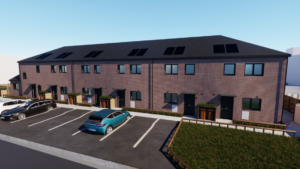What has Brexit meant for the UK’s property market?
 The chief executive of Market Financial Solutions, Paresh Raja (pictured) writes for New Start on what Brexit has meant for the UK’s property market, two years since the referendum…
The chief executive of Market Financial Solutions, Paresh Raja (pictured) writes for New Start on what Brexit has meant for the UK’s property market, two years since the referendum…
————————————————————
Saturday 23 June 2018 will mark two years since the UK’s historic EU referendum, in which a narrow majority of the population voted in favour of Brexit.
The event – one of the most profound political and economic moments of the country’s modern history – set in motion a wave of other significant incidents. In the year that followed the vote, the UK saw a new Prime Minister move into 10 Downing Street, interest rates fall to historic lows, a snap election end in a surprise hung parliament and Brexit negotiations officially commence with the triggering of Article 50.
As the second anniversary of the Brexit result approaches, now is an opportune moment to assess what has happened in the intervening 24 months. And in particular, with the UK’s actual departure from the EU drawing nearer, it is important to assess how the nation’s property market has responded to shifts in the market.
Pessimistic predictions
In the immediate aftermath of the EU referendum result, which was delivered on 24 June 2016, there was a swathe of different forecasts about what the decision would mean for various industries and financial markets. In truth, few people could accurately gauge how things would unfold – indeed, there was no real precedent for what the UK was about to go through.
Yet the most rudimental facts would suggest that the property sector has performed resolutely over the past two years. According to data from the Office for National Statistics (ONS), in June 2016 the average house price across the UK stood at £212,887. By April 2018, the latest available records, this figure had jumped to £226,906 – a rise of more than £14,000, or 6.6%.
More widely, the economy has remained stable despite many predicting that it would implode. The reality is that GDP growth in both 2016 and 2017 remained at roughly 2%, which was similar to 2015. Furthermore, in June 2018 it was revealed that employment levels had increased, with 32.39 million people in work – that represents a year-on-year increase of 440,000.
Of course, context must be provided to all of these statistics. For example, slow wage growth coupled with inflation has meant that employment figures do not tell the full story. Meanwhile, the impact of the pound falling in value against the euro must also be taken into consideration for both trade and also property investment.
Nevertheless, real estate prices continue their upward march, albeit at a slightly slower pace than before. Furthermore, the wider economy has shown that, for the most part, the private sector is treating the current climate as ‘business as usual’.
Supply versus demand sets the foundation
There are two major factors that can be attributed to the property market’s ongoing growth. The first is that, traditionally, during periods of pronounced change or economy instability, property shows itself to be a popular, reliable asset class for people to invest in.
Secondly, and more importantly, there remains huge demand for residential property across the country. Simply put, there are not enough houses and flats available for sale to match the number of people looking to buy – this is particularly true for more affordable properties at the lower end of the market.
Indeed, the UK Government has consistently reaffirmed its intentions to boost the amount of housing available in all corners of the country. Yet until substantial progress is made in terms of the number of new builds erected, renovations completed and innovative new measures introduced to encourage the creation of more housing, it is difficult to see the imbalance between supply and demand being corrected. And as a consequence, prices will edge upwards.
The changes
Brexit has not had any significant impact on property price growth, especially outside of London. Yet the past two years have seen other trends take hold within the wider real estate sector.
It is important to note, however, that these changes are not a direct result of Brexit – their emergence happens to have occurred within the two-year period since the EU referendum, but they are not a consequence of the event.
For one, there has been a fall in the numbers of mortgages being approved over recent months. It was recently revealed that the value of new commitments made by mortgage providers in the first quarter of the year was £61.1 billion, a 5.9% fall from the fourth quarter of 2017.
More stringent regulations have made the process involved in securing a mortgage longer and more complicated in recent years. And meanwhile, interest in alternative finance such as bridging loans has risen notably. Annual bridging completions by members of the Association of Short Term Lenders now stands at roughly £4 billion, and it is rising all the time – for example, the value of loans written in the first quarter of 2018 increased by 32.5% compared to the same quarter last year.
Elsewhere, since the Brexit vote we have seen stamp duty cut for first-time buyers, while Westminster’s squeeze on buy to let landlords has tightened further. Both have had an impact on the market; while the latter has helped ensure more properties go to live-in homeowners as opposed to investors, the former has encouraged more people to take that first leap onto the bottom of the property ladder.
Continuing to push on
The ‘B’ word continues to dominate the news agenda – it will for months if not years to come. Yet the indications so far are that the UK’s economy, and in particular its property market, continues to push forward. In fact, the more notable changes to the real estate sector have been a result of government-led policy, rather than the consequence of our impending departure from the EU.
It is impossible to say what the long-lasting impact of Brexit will be on the property market. But it appears clear that appetite for purchasing bricks and mortar is as strong as ever – when coupled with limited supply on the market, conditions are set for on-going prices rises and a continuing need for more homes to be built in the years ahead.















